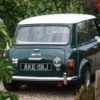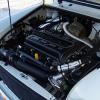
Pros And Cons Of Water Heading Inlet Manifolds
#1

Posted 05 October 2009 - 12:05 PM
love your thoughts
#2

Posted 05 October 2009 - 12:09 PM
They're pretty much useless in the uk to be honest. They whole point of them is to stop carb icing (a problem more associated with old motorbikes than cars)... you might get carb icing if you live really close to a motorway and your engine is cold when you are doing 70mph when its like -10°C outside. Unlikely to say the least.
Other than that, it will lose you power as your inlet air temp will go up.
Having said all that... I still plumbed mine in as I didnt like seeing something not connected lol
#3

Posted 05 October 2009 - 12:42 PM
#4

Posted 05 October 2009 - 12:54 PM
Far from USELESS
#5

Posted 05 October 2009 - 01:14 PM
#6

Posted 05 October 2009 - 01:27 PM
#7

Posted 05 October 2009 - 03:37 PM
You even have tuned cars fitterd with 'cold air boxes' to ensure that the petrol/air inlet charge is as cold, and thus as dense, as possible to give the optimum power so why is heating the charge before it gets into the combustion chamber thought to be a good thing?
The old rule I learnt in 'Engine Technology' at college was that the colder the inlet charge the more potential power there was in it.
On some turbo-charged cars you even have an intercooler to ensure the air is as cold as possible going into the engine and thus maximise efficiency.
I never connect the hot water pipes to any manifold and my cars don't need re-tuning for Winter or for Summer.
#8

Posted 05 October 2009 - 03:46 PM
Never had any issues with it like that in 2 years. Even on morning where the doors have been frozen shut.
#9

Posted 05 October 2009 - 04:32 PM
#10

Posted 05 October 2009 - 05:20 PM
#11

Posted 05 October 2009 - 08:18 PM
Arguably the finest Minis were the Cooper 'S' Mks 1 & 2. They never had or needed a water heated inlet manifold and the theory of heating up the inlet charge pre-entry flies in the face of all established theories about cold air/petrol mix having a greater capacity for burn efficiency. My old 2003 Rover 75 Turbo had a water heated inlet and when the manifold failed the engine blew up! That manifold was water heated to improve emissions, apparently.
The established fact is that the cooler and damper the air going in, the better will be the burn. In some sophisticated engines they even have cold water spray injection into the inlet manifold to promote better a expansion ratio when the mixture burns.
Water heated manifolds really aren't necessary on a Mini.
#12

Posted 05 October 2009 - 08:38 PM
#13

Posted 05 October 2009 - 09:05 PM
A few years ago, together with a friend, I looked at a water injection system for the Mini. It needed a microprocessor to control the amount of water to be injected linked to throttle input, revs, and other variables and that cost, plus the dyno time to develop it made it not economically viable, but we believed we could have gained a few bhp here and there.
A simplified system could, perhaps, have a fixed rate of water flow through a small spray nozzle in the inlet manifold, the actual optimum rate determined by dyno testing, at full throttle over, say, 4500 rpm.
#14

Posted 05 October 2009 - 09:24 PM
It's possible to run a much higher compression ratio, which helps economy no end. The water prevents detonation problems associated with the higher compression ratio.
#15

Posted 05 October 2009 - 09:58 PM
Quite right. Jet engines love a bit of cold water in the front. They have the same problem with a warm mixture at the intake and lose a lot of power. in fact, 'hot & high' airfield tests are a part of the ttest programme for all aircraft and engines as this is where their take-off performance is poorest. It's exactly the same as the situation with the internal combustion engine.
A few years ago, together with a friend, I looked at a water injection system for the Mini. It needed a microprocessor to control the amount of water to be injected linked to throttle input, revs, and other variables and that cost, plus the dyno time to develop it made it not economically viable, but we believed we could have gained a few bhp here and there.
A simplified system could, perhaps, have a fixed rate of water flow through a small spray nozzle in the inlet manifold, the actual optimum rate determined by dyno testing, at full throttle over, say, 4500 rpm.
it have to be a cold water spray nozzle, and set at the right velocity and amount otherwise ud just end up fluddin the engine.
and yaaa boy to cooperman. ive just done 2 years of aerospace engineering!!! just ent got a aerospace job!!!
i never had the water pipe but ive takin it of a few of my mates minis and they have prefered it aswell. it also helps with coolin a mini because you arnt running hot water into a hot manifold!!!!!
1 user(s) are reading this topic
0 members, 1 guests, 0 anonymous users




















